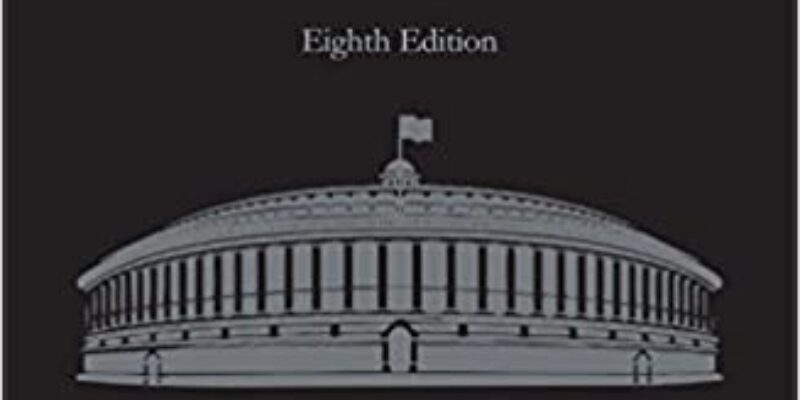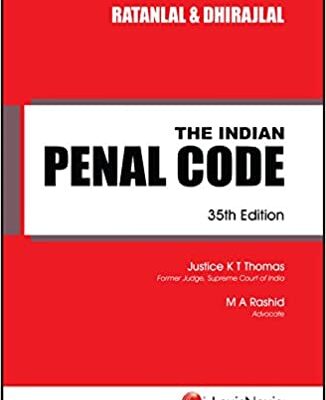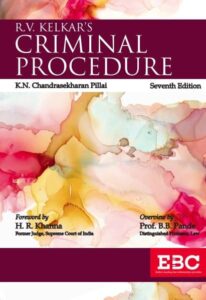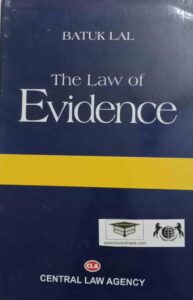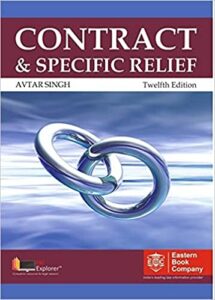
Introduction
The All-India Judicial Services (AIJS) were not originally included in the Indian Constitution, but later Article 235 was added, which stated that the lower court was subservient to the High Court. The notion of forming an All-India Judicial Services Commission was initially proposed by the Law Commission (1st, 8th, and 11th, 116th) in 1958. (AIJS).
The Chief Justices Conferences of 1961, 1963, and 1965 advocated the formation of an AIJS, but certain High Courts were opposed to the notion since it took away their power to recruit lower-level judges. The recruitment of the lower judiciary is the responsibility of the state governments, which is done either by the High Courts or the State Public Service Commissions.
The Swaran Singh Committee issued its recommendations in 1976, and Article 312 (which dealt with the All India Services) was amended to include judicial services, with the exception of those below the rank of a district court judge.
The recruitment of District Court judges will become centralized with All-India Judicial Services, as candidates would be selected after passing an all-India examination and then allotted to each state. It remains to be seen whether this approach to recruitment will prove to be transparent and effective in identifying the greatest legal talent in India.
Need For All India Judicial Services

Huge Judicial Vacancy- There are currently around 5000 vacancies in India’s lower judiciary.
Delays In Recruitment- There are about 3 crore cases languishing in the lower judiciary, with the primary cause being the states’ failure to conduct tests on time.
Inadequate Funding From State Governments- State judicial services do not attract the “best people” because state governments do not offer competitive salaries, benefits, and compensation.
Shortage of Qualified Judicial Officers- The quality of justice delivery has been steadily declining, affecting the higher judiciary.
Discretion Of A Small Group- Choosing a judge is a serious duty that should not be left to the whims of a small group of judges, no matter how judicious they are.
Subjectivity In The Process- Currently, the collegium’s judicial appointments are prone to subjectivity, corruption, and nepotism. As a result, it is critical to construct an impartial recruitment system that reflects the country’s social realities and diversity.
Objections To The All-India Judiciary
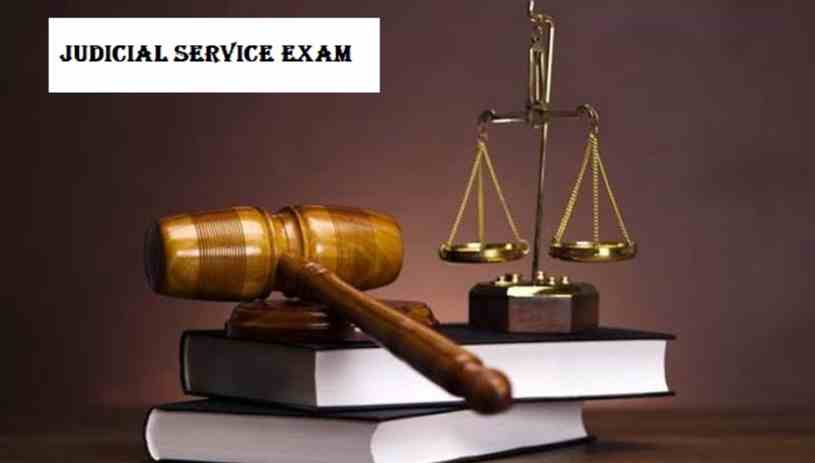
Separation of powers is weakened- The state judiciary is under the supervision of the High Courts, according to Article 235. If the responsibility for state judiciary recruitment is transferred from the High Courts to the Union government via AIJS, the judiciary’s independence will be jeopardized.
The problem of the local language- Judges in the District Court and Sessions Court speak in the state language, making it difficult for AIJS officers to adjust to the local language and dialects, affecting the delivery of justice.
Local laws are a problem- AIJS ignores the issue of local laws and customs, which vary greatly across the country.
AIJS just affects the top of the iceberg; it does not address the issue of poor pay or the absence of proper judicial infrastructure in the states, such as courts and training centers for officers. Despite the fact that district court judges occupy less than one-third of the seats in the High Courts, AIJS does not suggest any adjustments to ensure improved representation of district court judges in the High Courts. As a result, the selected judges’ training costs would rise.
List Of All The Chief Justice Of India
| Image | Name (birth–death) | Period of office | Tenure | Appointed by (President of India) | |
 |
HarilalJekisundas Kania (1890–1951) | 26 January 1950 | 6 November 1951+ | 1 year, 284 days | Rajendra Prasad |
 |
Mandakolathur Patanjali Sastri (1889–1963) | 7 November 1951 | 3 January 1954 | 2 years, 57 days | |
 |
Mehr Chand Mahajan (1889–1967) | 4 January 1954 | 22 December 1954 | 352 days | |
 |
Bijan Kumar Mukherjea (1891–1956) | 23 December 1954 | 31 January 1956+ | 1 year, 39 days | |
 |
Sudhi Ranjan Das (1894–1977) | 1 February 1956 | 30 September 1959 | 3 years, 241 days | |
 |
Bhuvaneshwar Prasad Sinha (1899–1986) | 1 October 1959 | 31 January 1964 | 4 years, 122 days | |
 |
Pralhad Balacharya Gajendragadkar (1901–1981) | 1 February 1964 | 15 March 1966 | 2 years, 42 days | Rajendra Prasad |
 |
Amal Kumar Sarkar (1901–2001) | 16 March 1966 | 29 June 1966 | 105 days | |
 |
Koka Subba Rao (1902–1976) | 30 June 1966 | 11 April 1967‡ | 285 days | |
 |
Kailas Nath Wanchoo (1903–1988) | 12 April 1967 | 24 February 1968 | 318 days | |
 |
Mohammad Hidayatullah (1905–1992) | 25 February 1968 | 16 December 1970 | 2 years, 294 days | Zakir Husain |
 |
Jayantilal Chhotalal Shah (1906–1991) | 17 December 1970 | 21 January 1971 | 35 days | V. V. Giri |
 |
Sarv Mittra Sikri (1908–1992) | 22 January 1971 | 25 April 1973 | 2 years, 93 days | |
 |
Ajit Nath Ray (1912–2009) | 26 April 1973 | 27 January 1977 | 3 years, 276 days | |
 |
Mirza Hameedullah Beg (1913–1988) | 29 January 1977 | 21 February 1978 | 1 year, 24 days | Fakhruddin Ali Ahmed |
 |
Yeshwant Vishnu Chandrachud (1920–2008) | 22 February 1978 | 11 July 1985 | 7 years, 139 days | Neelam Sanjiva Reddy |
 |
Prafullachandra Natwarlal Bhagwati (1921–2017) | 12 July 1985 | 20 December 1986 | 1 year, 161 days | Zail Singh |
 |
Raghunandan Swarup Pathak (1924–2007) | 21 December 1986 | 18 June 1989‡ | 2 years, 209 days | |
 |
E. S. Venkataramiah (1924–1997) | 19 June 1989 | 17 December 1989 | 181 days | Ramaswamy Venkataraman |
 |
Sabyasachi Mukharji (1927–1990) | 18 December 1989 | 25 September 1990† | 281 days | |
 |
Ranganath Misra (1926–2012) | 26 September 1990 | 24 November 1991 | 1 year, 59 days | |
 |
Kamal Narain Singh (1926–) | 25 November 1991 | 12 December 1991 | 17 days | |
 |
Madhukar Hiralal Kania (1927–2016) | 13 December 1991 | 17 November 1992 | 340 days | |
 |
Lalit Mohan Sharma (1928–2008) | 18 November 1992 | 11 February 1993 | 85 days | Shankar Dayal Sharma |
 |
M. N. Rao Venkatachaliah (1929–) | 12 February 1993 | 24 October 1994 | 1 year, 254 days | |
 |
Aziz Mushabber Ahmadi (1932–) | 25 October 1994 | 24 March 1997 | 2 years, 150 days | |
 |
Jagdish Sharan Verma (1933–2013) | 25 March 1997 | 17 January 1998 | 298 days | |
 |
Madan Mohan Punchhi (1933–2015) | 18 January 1998 | 9 October 1998 | 264 days | K.R Narayanan |
 |
Adarsh Sein Anand (1936–2017) | 10 October 1998 | 31 October 2001 | 3 years, 21 days | |
 |
Sam Piroj Bharucha (1937–) | 1 November 2001 | 5 May 2002 | 185 days | |
 |
Bhupinder Nath Kirpal (1937–) | 6 May 2002 | 7 November 2002 | 185 days | A. P. J. Abdul Kalam |
 |
Gopal Ballav Pattanaik (1937–) | 8 November 2002 | 18 December 2002 | 40 days | |
 |
Vishweshwar Nath Khare (1939–) | 19 December 2002 | 1 May 2004 | 1 year, 134 days | |
 |
S. Rajendra Babu (1939–) | 2 May 2004 | 31 May 2004 | 29 days | |
 |
Ramesh Chandra Lahoti (1940–2022) | 1 June 2004 | 31 October 2005 | 1 year, 152 days | |
 |
Yogesh Kumar Sabharwal (1942–2015) | 1 November 2005 | 13 January 2007 | 1 year, 73 days | |
 |
K. G. Balakrishnan (1945–) | 14 January 2007 | 12 May 2010 | 3 years, 118 days | |
 |
Sarosh Homi Kapadia (1947–2016) | 12 May 2010 | 28 September 2012 | 2 years, 139 days | Pratibha Patil |
 |
Altamas Kabir (1948–2017) | 29 September 2012 | 18 July 2013 | 292 days | Pranab Mukherjee |
 |
P. Sathasivam (1949–) | 19 July 2013 | 26 April 2014 | 281 days | |
 |
Rajendra Mal Lodha (1949–) | 27 April 2014 | 27 September 2014 | 153 days | |
 |
Handyala Lakshminarayanaswamy Dattu (1950–) | 28 September 2014 | 2 December 2015 | 1 year, 65 days | |
 |
Tirath Singh Thakur (1952–) | 3 December 2015 | 3 January 2017 | 1 year, 31 days | |
 |
Jagdish Singh Khehar (1952–) | 4 January 2017 | 27 August 2017 | 235 days | |
 |
Dipak Misra (1953–) | 28 August 2017 | 2 October 2018 | 1 year, 35 days | Ram Nath Kovind |
 |
Ranjan Gogoi (1954–) | 3 October 2018 | 17 November 2019 | 1 year, 45 days | |
 |
Sharad Arvind Bobde (1956–) | 18 November 2019 | 23 April 2021 | 1 year, 156 days | |
 |
Nuthalapati Venkata Ramana (1957–) | 24 April 2021 | Incumbent | 1 year, 2 days | |
Best Books For Constitution Of India Are
Benefits Of All India Judicial Services
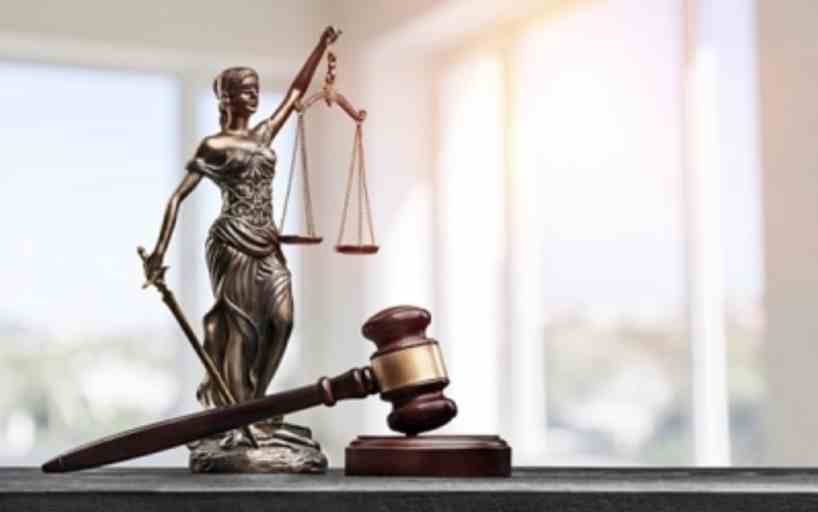
Accountability and Transparency- The AIJS will improve the judiciary’s professionalism, accountability, and fairness.
Recruitment of the top talent- AIJS will ensure that the recruitment process is transparent and fast in order to attract the greatest legal talent. Also, because district court judges now join the High Courts far later than judges from the Bar, the potential of early promotion of district court judges to the High Courts would grow.
Checks case backlogs- A more streamlined and objective recruitment procedure will ensure a steady stream of high-quality judicial officers for open positions, reducing case backlogs.
Overall efficiency- A well-organized system of judicial officer recruitment will attract young talent from law schools, and youthful, well-informed judicial officers at the district judge level will make a difference. As more district judges and district judges are appointed, the court system will become more efficient.
Way Forward- AIJS will attract qualified judicial officers, resulting in faster case resolution, correct judgments that do not lend themselves to appeal, and a reduction in the number of appeals. For the Indian judiciary to be rejuvenated, the quality of the lower judiciary is critical.
Even though the Supreme Court has underlined the establishment of AIJS twice, the administration and the High Courts are obstructing it. As a result, AIJS should be written in such a way that all of the flaws are addressed in order for it to be effective.
Language should not be a barrier since if civil workers can acquire the local language of the state in which they are stationed, so can judicial officers. The issue of wage scales and career advancement should be addressed. Following the selection process, judicial officers should be given adequate training to perform their duties.
A competent judiciary is urgently needed, and it can only be achieved through a competitive recruitment procedure.
The timely resolution of cases is a concern shared by all members of society. This is only possible if there are enough judges. Only via mass recruitment through AIJS, similar to the recruitment of IAS, IPS, and other civil services, would adequate judges be available. As a result, the AIJS should be established as soon as possible.
Pros And Cons Of Judicial Services
Cons:
- Language:-
The judiciary, on the other hand, is a little different from the civil service. As a judge, the officer is obligated to carry out all of his or her responsibilities in his or her individual capacity. Briefs must be delivered in the local language, and orders must be placed in the local language. A person from Uttar Pradesh may not be in the ideal position to do so in a place like Tamil Nadu, for example.
- Law that is specific to a certain location:-
As a Judge, the officer would be expected to deal with matters pertaining to local legislation. If an AIJS exam is conducted in the same manner as a civil service exam, it may not be sufficient to evaluate a candidate. A comprehensive examination of all federal and state laws will be impossible in a single examination. Furthermore, it would be hard to assess one’s linguistic abilities.
- There is a lack of a central character:-
It would be difficult for the AIJS to maintain a central character because candidates are seldom transferred outside of their home country. They would be of little value to the central government in terms of policy implementation.
Pros:
Because of the historic nobility connected to the services, a large number of law graduates choose civil service over the judiciary as a career path. Furthermore, the civil service offers greater benefits and compensation.AIJS would take steps to prevent this from happening. The fact that the judicial side and the civil side are on an equal footing
In addition, the state public service commissions are not precisely the ideal recruiting organizations; there are lapses, corruption, and irregularity among them. The UPSC can make certain that such things do not occur. Together, these two factors will significantly increase the quality of candidates and officers while also bringing about greater uniformity, so increasing the credibility of the services in the eyes of the public, and resulting in better administration of justice. This would also help to push the discussion of justice into the mainstream. A better judiciary would logically imply a better legal profession. AIJS would result in improved infrastructure as well as a more technologically friendly system. It’s a win-win situation for the folks.
Fucntions And Features Of Indian Judiaciary
Features:
The judicial system in India is a single, integrated system. The Indian judiciary is divided into two categories under the Indian Constitution: superior judiciary (the Supreme Court and the High Courts) and subordinate judiciary (the lower courts) (the lower courts under the control of the High Courts). The Indian Constitution was written on January 26, 1950, and it is the world’s largest constitution. The Indian constitution is both the source of law and the highest law of the country. The Supreme Court, High Court, District Court, and Subordinate Court make up India’s judicial system.
The court has the authority to make decisions, as well as to enforce the law and resolve conflicts. Judges and other magistrates make up the bench, or core, of the judiciary system.
The state’s powers are separated into three components in India’s Constitution: executive, legislative, and judicial. The executive’s role is to put laws into effect, the legislature’s function is to enact laws, and the judiciary’s job is to resolve disputes.
The Supreme Court, the State Judiciary, the Subordinate Courts, and the Lok Adalat are the three branches of the Indian judiciary. The presence of a judiciary is critical for the country’s democracy to be protected. It is a common law-based system. The British invented this system.
Functions:
Supreme Court of the United States- The Supreme Court of India, based in Delhi, is the country’s highest court. On January 28, 1950, the Supreme Court of India (Supreme Court) was constituted. The “Chief Justice of India” is its leader.
The Supreme Court is made up of 30 judges who can serve until they are 65 years old. The Indian Constitution is also safeguarded by the Supreme Court. It also imposes penalties on individuals who break the law. The Supreme Court has the authority to arbitrate disputes between the country’s 25 High Courts.
The Supreme Court- It’s been put in place at the state level. In India, there are a total of 24 High Courts. The oldest is the Kolkata High Court, which was founded in 1862 AD.
Civil and criminal trial courts- and tribunals oversee all High Courts. The Supreme Court oversees all High Courts, and in the event of a conflict, the case is sent to the Supreme Court.
District and Session Courts- At the district level, such courts have been established. Disputes, fighting, and other issues that arise inside the district are dealt with by these courts. The district court has a higher rank than the lower courts. The High Court supervises all district and subordinate courts.
Tribunal- A tribunal is a single-judge court.
Hierarchy Of The Indian Judicial Service
In India, judicial officers have a great deal of opportunity for advancement. While it is theoretically possible for a lower-level official to advance to any higher rank, including that of Chief Justice of India, no judicial officer from a subordinate judiciary has been appointed to this post till now. Some junior officers, on the other hand, have been elevated to the position of Judge on the Supreme Court. A judicial officer would normally begin his or her career as a civil judge in a Court of Judicial Magistrate of First Class, where he or she will continue to work until retirement. The appointment of District Judges can be made straight from the bar by way of a competitive examination for candidates who have at least 7 years of experience practicing in any court in India. The current retirement age for Indian Judicial Officers is 60 years in the district court, 62 years in the High Court, and 65 years in the Supreme Court, according to the government.
Entry-level judge jobs in the Courts of the Judicial Magistrate of the First Class are typically referred to as probationary or trainee positions in the legal profession. After successfully completing the probationary assignment, a candidate is appointed either as a Judicial Magistrate of First Class on the criminal side or as a District Munsiff on the civil side, depending on their qualifications. Judiciary duties, in contrast to many other Indian Union public service officer positions, are predominantly field occupations. In most cases, officers are not assigned to these deputy positions at the beginning of their careers, but after gaining many years of courtroom experience, they may be appointed to a deputy position in order to improve their careers.
A civil judge can be elevated to the status of Civil Judge after accumulating at least 5 years of relevant experience in the junior division. According to the ACP system, if an officer’s promotion is delayed for more than 5 years in the same grade, he or she is eligible to earn the first stage of the higher ACP pay scale for the next 5 years after completing 5 years of service in the same grade. If they do not receive a promotion for another 5 years, their pay scale under the ACP is increased in accordance with their performance.
As soon as they have completed the required number of years of service in the senior division of the High Court, with the consent of the Governor of the respective state, they are promoted to the cadre of entry-level District Judge or Additional District & Session Judge, depending on the number of vacancies available. When judges in the rank of DJ are additionally entrusted with administrative authority, they are referred to as the Principal District & Sessions Judges of their respective districts, which is a formal title.
Salaries And Consolidation
| RANK | DISTRICT | STATE/ HIGH COURT | SUPREME COURT | PAY SCALE |
| 1 | — | — | Chief Justice of India | ₹280,000 |
| 2 | — | — | Sitting Judges of the Supreme Court | ₹250,000 |
| 3 | — | Chief Justice of the High Court | — | ₹250,000 |
| 4 | — | Justice of the High Court | — | ₹2,25,000 |
| 5 | District & Session Judge / Principal Judge, Family Court / Judicial Commissioner | Registrar General & Registrar at High Courts Principal Secretary to State | Law Secretary to the Government of India Secretary General & Registrar at Supreme Court of India | District Judge ₹51550 to ₹76450 |
| 6 | Additional District & Session Judge / Additional Judicial Commissioner | Addl. Registrar at High Courts Legal advisor / Special Secretary to State Government, Governor of State | Additional /Joint Registrar at Supreme Court of India Additional or Joint Law Secretary of India | District Judge ₹51550 to ₹76450 |
| 7 | Chief Judicial Magistrate / Chief Metropolitan Magistrate Sub-Judge (Civil Side) | Joint / Deputy Registrar at High Court Joint Secretary / Law Officer to State | Deputy / Special Registrar at Supreme Court Deputy Secretary / OSD to Government of India | Civil Judge – ₹39530 to ₹63070 |
| 8 | Judicial Magistrate 1st Class / Metropolitan Magistrate (in Metropolitan area) District Munsif (Civil Side) | Assistant Registrar at High Court Under Secretary to State Government | — | Civil Judge – ₹27700 to ₹54010 |
Judges On The Supreme Court And The High Court
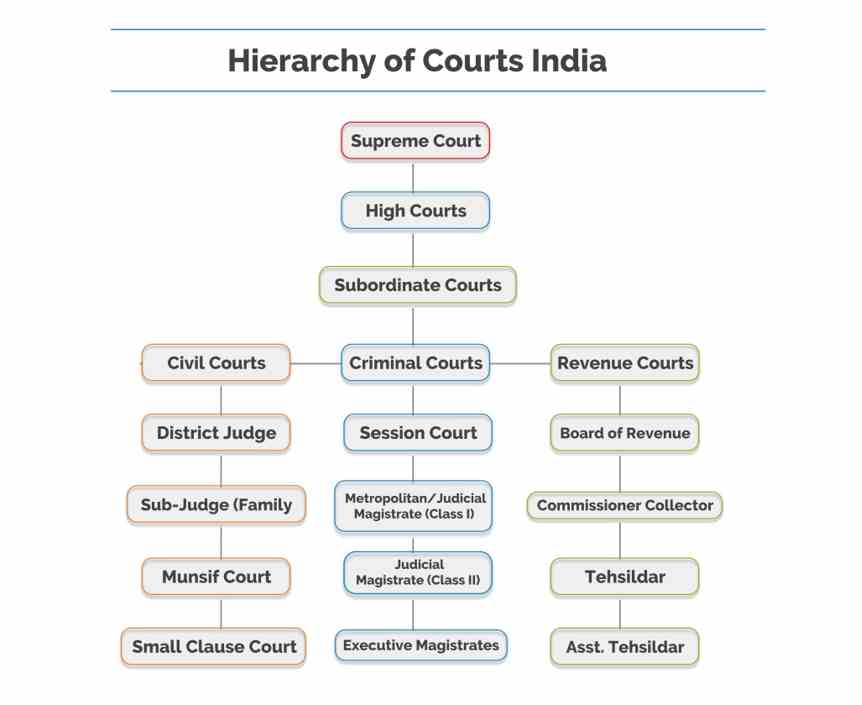
- The payment of this authority is made out of the Consolidated Fund of the government. The remuneration and working conditions of Supreme Court and High Court judges are governed by two distinct statutes. The Supreme Court Judges (Salaries and Conditions of Employment) Act governs the pay and allowances procedures for Supreme Court Judges and their deputies. In a similar vein, the High Court Judges (Salaries and Conditions) Act governs the salary, as well as the allowances and working conditions, of High Court Judges. The Central Government must introduce it to Parliament as a normal law and follow the right processes every time the salary or any other condition is modified by the government.
Promotional Hierarchy Of Judges
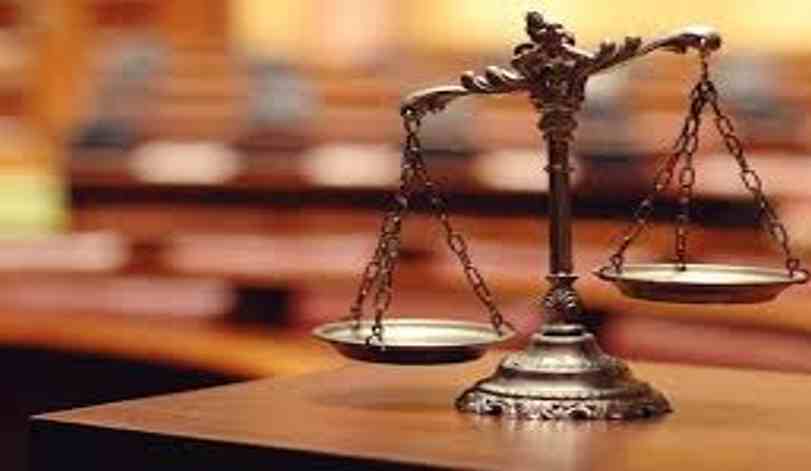
- The President of India appoints the judges of the Supreme Court. The procedure calls for the Chief Justice of the Supreme Court to send a panel of potential justices to the President of India via collegiums, with the agreement of the Central Government.
1. Lower Judiciary Services– The eligibility criteria for appearing in the Judicial Services Examination is a bachelor’s degree in law (LL.B) and the candidate must be enrolled or qualified to be enrolled as an Advocate under the Advocates’ Act 1961 in order to be considered for appointment.
2. Upper Judiciary Services– The eligibility criteria for appearing in the Judicial Services Examination is a bachelor’s degree in law (LL.B). There is no requirement for previous experience, and final-year students are welcome to apply. Each state has its own set of rules regarding the legal age of the majority. It is common between the ages of 21 and 35.
- Applicants for positions in the Higher Judiciary Services must be law graduates with a minimum number of years of litigation experience, which is often seven years.
The Judicial Service Examination is conducted in three parts, the first of which is the preliminary examination, the second of which is the main examination, and the third of which is the Viva-Voce/Interview.
Preliminary Test– The preliminary examination acts as a screening process for candidates who will be taking the main examination. It consists of multiple-choice questions of the objective variety. The marks obtained in the preliminary examination are not taken into consideration when making the final decision. The percentages of qualifying marks differ from one state to the next. The minimum qualifying scores in the preliminary examination are 60 percent for general candidates and 55 percent for those belonging to restricted categories, respectively.
Examination for the Mains – The mains test is a subjective form of examination. Three to four papers will be assigned for the test. The points earned by applicants are taken into consideration for the final decision. Via-voice interviews are held with candidates whose numbers equal three times the number of available positions.
Viva-Voce/Personal Interview– This is the final step of the selection process, during which candidates are evaluated on a variety of variables, including general interest, personality, and intelligence.
Judiciary Exams
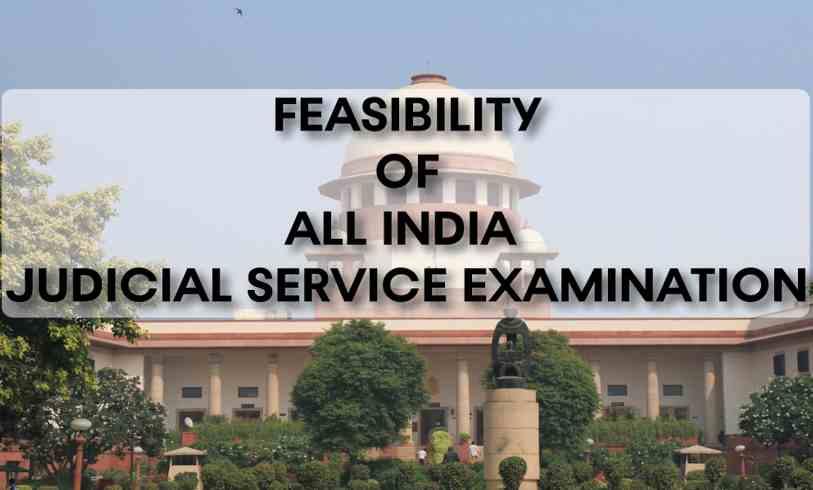
The Judicial Services Examination is an annual examination for the position of Civil Judge (Junior Division) in Subordinate Courts. Every Indian state has its own judicial test, such as the Delhi Judicial exam or the Haryana Judicial Service exam. Each state’s Public Service Commission administers the tests, which are overseen by their respective High Courts.
Judicial Service examinations are held practically every year in 24 Indian states. These are the following:
Arunachal Pradesh Chhattisgarh Himachal Pradesh Jharkhand Madhya Pradesh Mizoram Punjab Assam Goa Haryana Karnataka Maharashtra | Nagaland Rajasthan Bihar Delhi J&K Kerala Manipur Odisha Sikkim Uttarakhand Uttar Pradesh West Bengal |
The Application Process For Judicial Exams

Unlike UPSC exams, which are usually held in June, Judicial Examinations are held on a more sporadic basis. Preliminaries for the judiciary are usually held one month after the application form is submitted. There is no set time for Mains. It may be 20 days after the preliminary exam results are out, 40 days, or whatever.
As a result, many judicial aspirants begin studying for the judicial examination in their final year of law school, if not before. It is, however, far from the sole optimum strategy to prepare. In the past, many candidates were successful in passing the exam while working a full-time job. As a result, it is dependent on the aspirants’ potential and preparation method.
Aspirants must pay a fee after completing the application form, which varies depending on whether they are in the general or reserved category.
Exams For The Judiciary In Different Stages
- To be appointed to the lower judiciary, an aspirant must pass three stages. These are the stages:
- Preliminary
- Mains
- Interview
- Aspirants will join the respective state’s Judicial Academy for a year or more to be trained to become a judge after passing all of the above steps and qualifying for the merit list. Successful applicants will be taught the legal/judicial procedures, how to be a judge and the obligations and power that the job entails at the Academy. The aspirants will become judges truly, madly, and deeply after successfully completing the course and will join their respective courts.

Judicial Exams Syllabus
- As previously stated, while the method of administering the examination is the same in all states, the syllabus varies slightly. So, before preparing for any state exam, make sure to read the syllabus thoroughly. The substantive and procedural legislation is very similar. Local laws and language papers, on the other hand, fluctuate from state to state.
Judicial Exam Syllabus For Prelims
- The syllabus differs among states. It is basically separated into Civil law, Criminal Law, and Language paper. The weight accorded to the language paper is about 20 percent to 35 percent. The main examination contains six to seven exams and roughly 70 percent of the questions are about the law.
- General Knowledge
- Proficiency In English Language and Aptitude
- Constitutional law
- Contract Law and Tort Law
- Transfer of Property law
- Indian Evidence Act
- Law of Torts
Judicial Service Exam Syllabus For Mains
- The magistrate exam syllabus for mains will vary depending on each state. However, Assam, Arunachal Pradesh, Manipur, Nagaland, Mizoram, Maharashtra, and Jammu & Kashmir states will have almost the same syllabus for mains. Here is the list of subjects included in the mains syllabus:
- Paper I: Essay, precise writing, Grammar
- Paper-II: Objective test, Aptitude Test
- Paper III: Transfer of Property, Civil procedure code, Indian Contract Act, Constitution of India
- Paper IV: Indian Penal Code, CrPC, Law of Torts, Indian Evidence Act
What Is A Judge's Role?
A judge, also known as the “custodian of the constitution,” is a person who has power in courtroom proceedings. A judge’s powers and responsibilities vary depending on the jurisdiction. Each case brought before a court carries a variety of values, emotions, and stakes.
A judge is in charge of deciding the fate of both the plaintiff and the defendant. While some tasks are performed in the courtroom during trials, much of the work, such as obtaining opinions, conducting research, and discussing cases, is done behind closed doors in chambers. Judges’ primary responsibilities include supervising trials and listening to prosecutors’ and defendants’ charges, as well as witness testimony.
The defendant/rights plaintiffs are also informed/reminded by the judge. In addition, the judge has the authority to rule on the admission of evidence. They also give the jury instructions and decide whether the defendant is guilty or not. The sentences or punishments meted out to the guilty are then decided by a judge. They also decide how long the punishment will be. The chief justice’s decision is binding. All of these conclusions are based on a thorough and thorough comprehension of the case. A judge is the custodian of the constitution and the protector of fundamental rights, in addition to these duties in the courtroom. This means that any state or federal government’s conflicts will be evaluated by the judiciary while all rights and laws are upheld.
Role And Importance Of Judiciary In Indian System
- The judiciary is extremely important in the country. The judiciary has a wide range of abilities. The judiciary in India has been allowed entire independence in order to defend democracy and citizens’ rights.
- Interpretation of the Law:-
One of the major functions of the court is to interpret and apply laws to individual instances. As they decide the disputes or cases that come before them, judges interpret and apply laws. Before a law may be applied to a given instance, it must be properly interpreted. This function is handled by the judges. The courts interpret the law to mean whatever the judges think it means.
- To bring justice to the people:-
The first and most important function of the court is to provide justice to the people, regardless of how they obtain it. After a trial, it punishes those found guilty of violating state or individual rights. Citizens who have been wronged can use the courts to seek restitution and compensation. If they are scared of losing their rights or have experienced a loss, they can do so. The amount and severity of punishment meted out to criminals is determined by the judiciary. All cases concerning the payment of compensation to citizens are decided by it.
- All Disputes Will Be Resolved:-
The Indian judiciary resolves all domestic issues, fights, felonies, property disputes, and other types of problems. In addition, the judiciary’s role is to prosecute criminals and ensure that they are properly punished. The judiciary also resolves disagreements between civilians and the government.
- Protection of Individual Rights:-
The supreme duty of the judiciary is to safeguard the rights of the people. A citizen has the right to seek court protection if the government, private organisations, or fellow citizens violate or threaten to violate his or her rights. The judiciary is responsible for safeguarding people’s rights in all of these situations.
- Participate in the creation of new laws:-
Many times, the judiciary is confronted with cases in which the law is unclear. The “principle of equity” is used to settle these cases. Such decisions eventually become law. As a result, we can claim that the judiciary contributes to the creation of new laws.
- Defend Democracy:-
The country’s democracy is safeguarded by the judiciary. It automatically takes cognizance of any corruption, riot, repression, corruption, terrorism, or other offence and administers justice through trial.
- Its Decisions and Judgments are enforced:-
Not only does the court have the power to issue decisions and resolve disputes, but it also has the power to see that they are carried out. It has the power to direct the executive branch to carry out its directives. It has the capacity to summon anyone and extract information from them directly.
- In the event that a person is detained:-
- Disobedience to the court’s orders is a crime.
- In defiance of the court’s orders.
- Attempting to sway the court.
- If a person fails to appear in court for a hearing, the Court has the jurisdiction to charge him or her with contempt of court.
- Take on a Novel Role in a Federation:-
In a federal system, the court also serves as a constitutional protector and a mediator between the federal government and the states. It acts as a neutral and independent intermediary between the federal government and the states, as well as between states. All legal center-state issues are resolved by the judiciary.
- Assume Advisory Positions:-
The courts are frequently tasked with delivering legal guidance to monarchs. For example, the President of India has the right to refer to the Supreme Court any matter of law or truth that is of public significance.
- Administration of the Judicial System (Administration of the Judicial System):-
The judiciary is not a part of the government. It is not influenced by either the legislative or executive branches. It’s a separate, self-contained organ with its own structure and authority. It has the power to define the judicial system’s character in the state. It creates and implements its own set of rules. The appointment of magistrates and other court personnel, as well as their work, is governed by these rules. It creates and enforces rules to ensure that the judicial system functions smoothly and efficiently.
Top 13 Facts About The Indian Judicial Services
The ability of the judiciary to run and maintain its own judicial administration.
Only the most qualified and experienced judges are chosen.
The judges must be appointed to defend and safeguard the Constitution.
The judiciary should make defending one’s rights and getting justice as simple and economical as possible for the general population.
Procedures for removing judgments should be difficult, and no one should be able to do it alone.
The selection of judges must be done in a fair, thorough, effective, and transparent manner.
All of these aspects must be included in order to ensure a well-organized and unbiased judiciary.
The income, benefits, and working conditions of a judge must all be favorable to their profession.
Considering the facts to determine if the accused is legally guilty.
In civil trials, judges assess whether a petition is legitimate, estimate the charges, and then issue an order for reimbursement to the plaintiff.
In criminal cases, the judge decides whether to hold defendants in custody pending trial or to set bail and other conditions for their release.
If the accused is found guilty, the judge will impose a sentence. A fine, incarceration or both may be imposed by the judge.
Providing counsel to attorneys and litigants on issues and conduct relating to a case’s processes.

For deep details, you can read the full article. Click the link below :
